Trees Birds Mammals Fish Amphibians Reptiles
Wild Algarve
Bookshop
Cortinarius saturninus ( Fr.) Fr.
Phylum: Basidiomycota - Class: Agaricomycetes - Order: Agaricales - Family: Cortinariaceae
Distribution - Taxonomic History - Etymology - Toxicity - Identification - Reference Sources
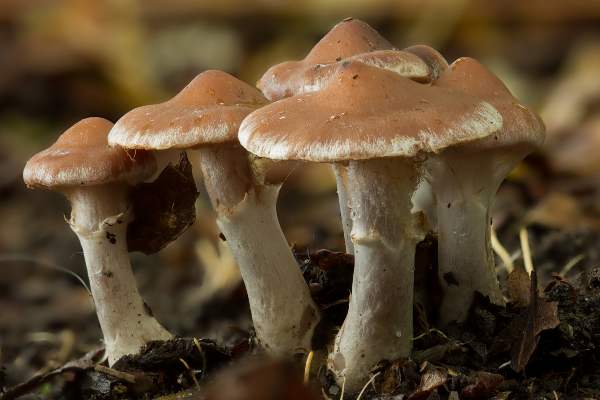
Cortinarius saturninus is a rare find throughout most of Britain and Ireland, where the easily-missed fruitbodies tend to occur in groups more often than singly. Look for this mushroom in late summer and autumn under willows.
Identification of webcaps is generally very difficult because there are so many similar species. Although there are several other brownish species with macroscopic characteristics similar to this one, the silvery-white cap margin is distinctive.
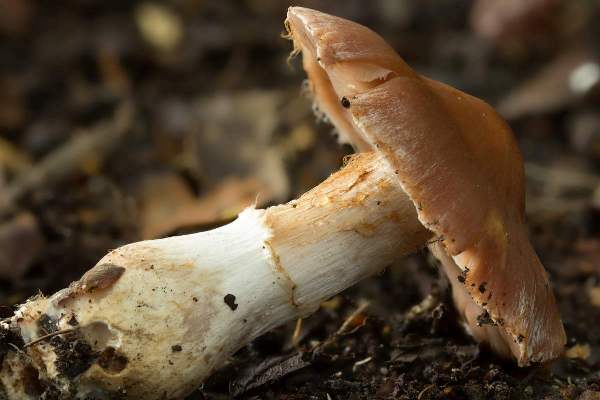
Distribution
A rare but quite widespread species in Britain and Ireland, Cortinarius saturninus occurs also throughout much of mainland Europe and parts of Asia. This webcap is listed in Mycoquebec.org, and I infer therefore that it has been found in Quebec; this suggests that it might occur also in other parts of North America.
Taxonomic history
This largish webcap was described in 1821 by Elias Magnus Fries, who gave it the binomial scientific name Agaricus saturninus. In 1838 Fries renamed this webcap as Cortinarius saturninus, which to the present time remains its generally-accepted scientific name.
Synonyms of Cortinarius saturninus include Agaricus saturninus Fr., and Cortinarius cohabitans P. Karst.
Etymology
The generic name Cortinarius is a reference to the partial veil or cortina (meaning a curtain) that covers the gills when caps are immature. In the genus Cortinarius most species produce partial veils in the form of a fine web of radial fibres connecting the stem to the rim of the cap rather than a solid membrane.
Just as you might expect, the specific epithet saturninus is a reference to the god Saturn and the planet named after him; someone who is described as saturnine is being labelled 'gloomy', and so is Cortinarius saturninus. The silvery-fringed caps are at least interesting if not altogether beautiful, and so I think this mushroom is being treated rather unfairly!
Toxicity
This mushroom is generally regarded as 'suspect' and may contain dangerous toxins; it should not be gathered for eating. Some Cortinarius species with which darkish specimens of the Birch Webcap could possibly be confused contain the toxin orellanine, which if eaten destroys human kidneys and liver.
Identification guide
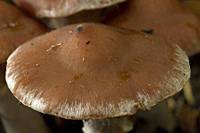 |
Cap
Slimy in wet weather, remaining sticky; 3 to 8cm in diameter; conical or hemispherical at first, becoming campanulate and then expanding until broadly umbonate, but retaining a slightly inrolled margin; reddish-brown to chestnut-brown with a slight violet flush; with distinctive silvery-white radial fibres near the margin. Cap and stem flesh are pale brownish cream, usually with small violet spots near the stem base. |
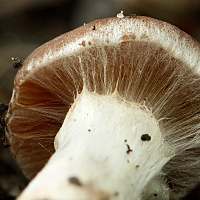 |
Cortina
White, web-like; collapsing onto the stem to create a white ring zone.. |
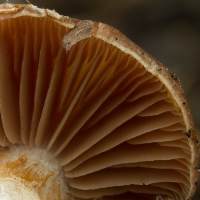 |
Gills
The adnate-emarginate gills are distant, coloured yellowish brown, sometimes with a violet flush at first but soon becoming mid brown; the smooth (non-serrate) gill edges are paler than the rest of the gills. |
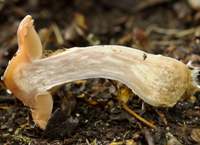 |
Stem
The dry (not slimy) stems are 1 to 2cm in diameter and 6 to 8cm tall; cylindrical, or sometimes with a basal bulb. The fibrous lined stipe is whitish with a superior white ring zone. Cortina fibres that collapse onto the upper stem become rust-brown as they collect some of the mature spores that fall from the gills. |
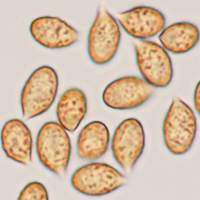 |
Spores
Ellipsoidal to amygdaloid (almond shaped), warty, 7-9 x 4-5 μm; inamyloid.
Spore print
Rusty brown. |
Odour/taste |
Odour not distinctive; taste mild. |
Habitat & Ecological role |
Ectomycorrhizal, in broadleaf woodlands mainly with willows. |
Season |
July to October in Britain and Ireland. |
Similar species |
Cortinarius cinnamomeus has a darker cap and cinnamon gills. |
Reference Sources
Fascinated by Fungi, 2nd Edition, Pat O'Reilly 2016, reprinted by Coch-y-bonddu Books in 2022.
Funga Nordica, Henning Knudsen and Jan Vesterholt, 2008.
Fungi of Switzerland Agarics, part 3: Cortinariaceae, Breitenbach, J., Kränzlin, F.
Dictionary of the Fungi; Paul M. Kirk, Paul F. Cannon, David W. Minter and J. A. Stalpers; CABI, 2008
British Mycological Society. English Names for Fungi
Taxonomic history and synonym information on these pages is drawn from many sources but in particular from the British Mycological Society's GB Checklist of Fungi.
Acknowledgements
This page includes pictures kindly contributed by David Kelly.
Top of page...
Fascinated by Fungi. Back by popular demand, Pat O'Reilly's best-selling 450-page hardback book is available now. The latest second edition was republished with a sparkling new cover design in September 2022 by Coch-y-Bonddu Books. Full details and copies are available from the publisher's online bookshop...